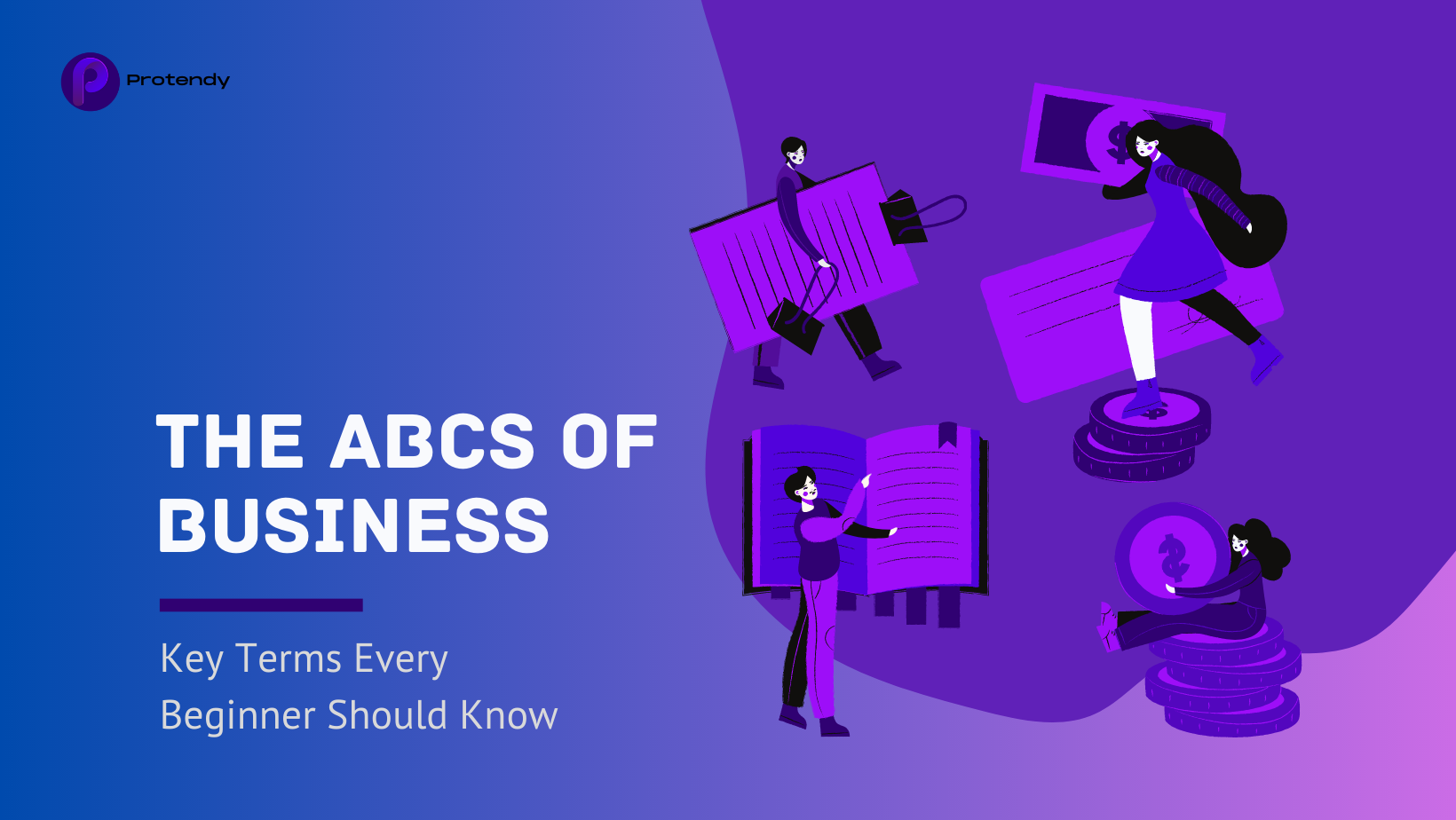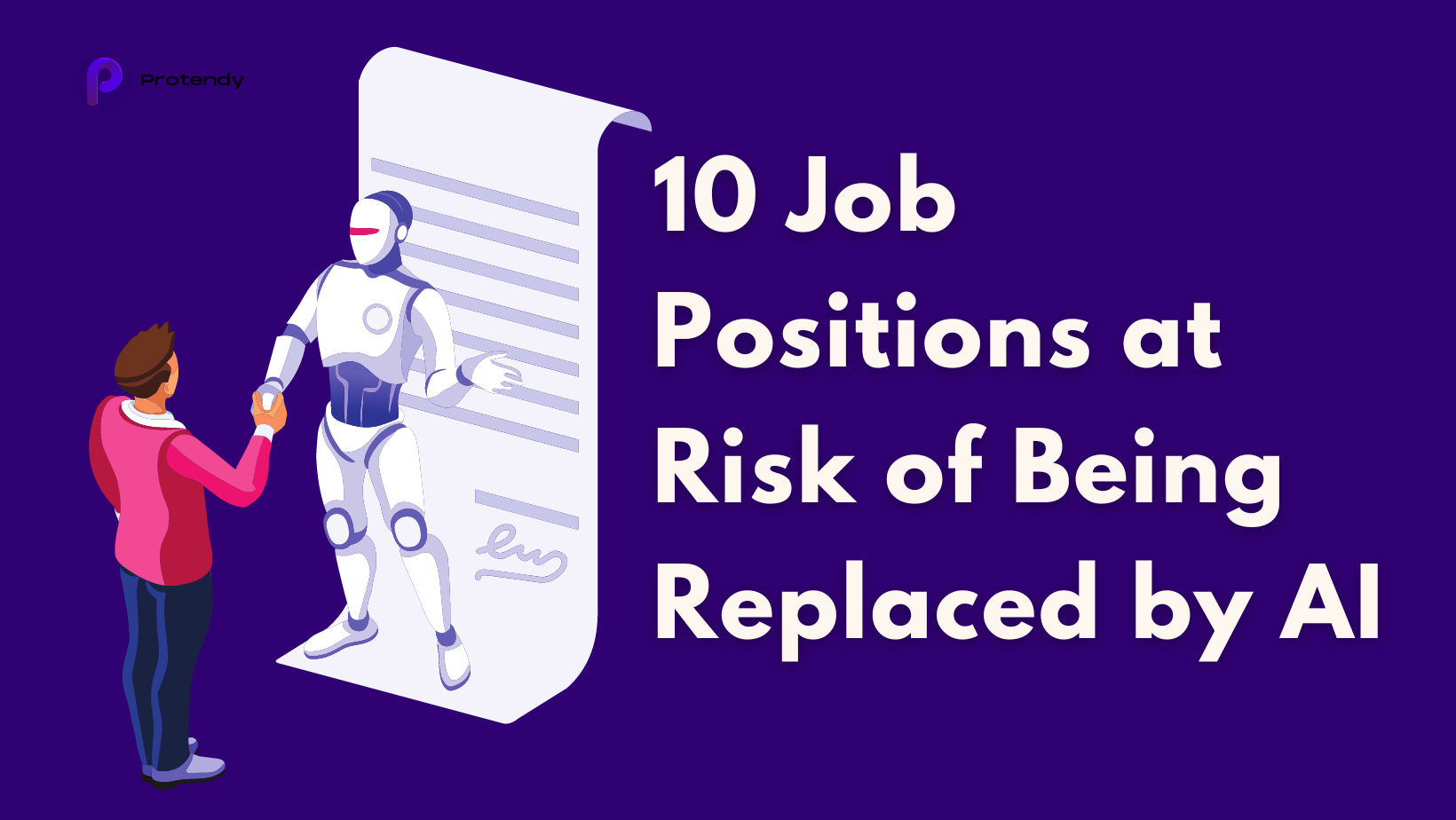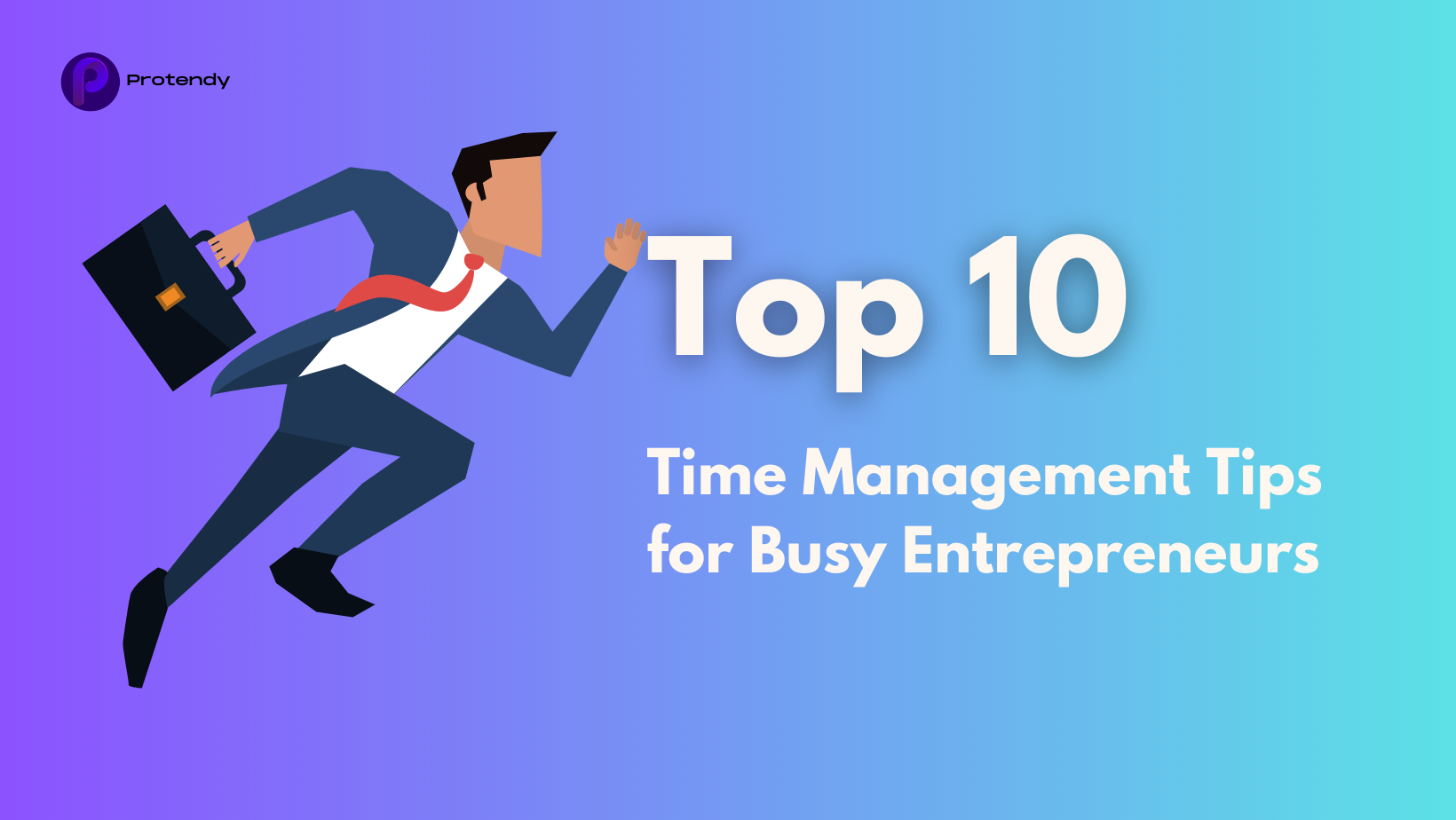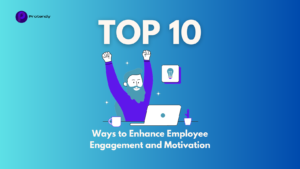Are you ready to unlock the secrets of the dynamic world of business? Welcome to Protendy’s Beginner-Level Business Education Series! We are delighted to embark on this thrilling educational journey with you, where we will demystify the essential concepts that lay the groundwork for success in entrepreneurship.
In the fast-paced and ever-changing business landscape, understanding fundamental terms is the key to navigating with confidence. Whether you’re a budding entrepreneur, a small business owner, or someone eager to grasp the intricacies of the business realm, this series is tailor-made for you!
Table of Contents
ToggleWhy Learn Business Terms?
Imagine setting sail on a ship without a compass or map—navigating the treacherous waters of business without a solid understanding of key terms can be just as perilous. By learning business terminology, you gain a valuable toolset that empowers you to make informed decisions, communicate effectively with peers and stakeholders, and steer your business towards sustainable growth.
The Importance of a Strong Business Foundation
Just as a skyscraper needs a robust foundation to reach great heights, every successful business relies on a solid footing. Our Beginner-Level Business Education Series is designed to provide you with the fundamental building blocks of business knowledge. We’ll start with the basics, equipping you with a clear understanding of essential terms that form the backbone of any successful venture.
A is for Assets
Assets are the lifeblood of a business, representing valuable resources owned by the company. They are the building blocks upon which a business is constructed and can range from physical objects to intellectual property. Understanding assets is vital because they directly impact the overall value and financial health of a business.
In essence, assets can be thought of as the tools and resources that empower a business to thrive and grow. They provide the means to generate revenue, fuel innovation, and create opportunities for expansion.
Differentiating Between Tangible and Intangible Assets:
Assets can be broadly categorized into two main types: tangible and intangible.
Tangible Assets: These are physical, touchable items that hold inherent value for a business. Tangible assets include machinery, equipment, real estate, vehicles, inventory, and cash. They can be seen, felt, and often used directly in the company’s day-to-day operations.
Intangible Assets: In contrast, intangible assets lack physical presence but hold significant value for a business. They include intellectual property such as patents, trademarks, copyrights, and trade secrets. Additionally, brand reputation, customer loyalty, and goodwill are also considered intangible assets.
Examples of Common Business Assets:
To better grasp the concept of assets, let’s explore some common examples of both tangible and intangible assets that businesses frequently possess:
Tangible Asset Examples:
- Machinery and Equipment: A manufacturing company’s production line machinery, or a restaurant’s kitchen equipment, are tangible assets crucial to their operations.
- Real Estate: Office buildings, retail spaces, and warehouses owned by a business are valuable tangible assets.
- Inventory: For a retail store, the goods available for sale represent a significant portion of its tangible assets.
- Cash: The cash reserves held by a business to cover day-to-day expenses and emergencies.
Intangible Asset Examples:
- Intellectual Property: A software company’s proprietary software, protected by copyrights, is a valuable intangible asset.
- Brand Name: A well-established brand name and logo that inspire customer trust and recognition.
- Customer Loyalty: The loyal customer base built through excellent service and customer satisfaction.
- Trade Secrets: Proprietary formulas or methods known only to the company, giving them a competitive edge.
In conclusion, assets are the foundation of a successful business, providing the means to operate, grow, and maintain a competitive advantage. As you venture further into the world of business, keep in mind that effectively managing and leveraging your assets is key to achieving long-term success.
B is for Break-Even Point
The break-even point is a critical financial milestone for any business. It is the juncture at which total revenue equals total expenses, resulting in zero profit or loss. Simply put, it’s the level of sales or operations where a business covers all its costs, and beyond which it starts making a profit.
Understanding the break-even point is vital because it helps business owners set realistic sales targets and pricing strategies. It acts as a benchmark for evaluating the financial feasibility of a product, service, or overall business venture.
Calculating the Break-Even Point:
To calculate the break-even point, a business must consider two primary types of costs:
- Fixed Costs: These are expenses that remain constant regardless of the level of production or sales. Examples include rent, insurance, salaries, and utilities.
- Variable Costs: Variable costs, on the other hand, fluctuate with changes in production or sales volume. They include costs directly related to producing goods or delivering services, such as raw materials, packaging, and direct labor.
Once the fixed and variable costs are determined, the break-even point can be calculated using the following formula:
Break-Even Point (in units) = Fixed Costs / (Selling Price per Unit – Variable Cost per Unit)
Examples of Understanding the Break-Even Point:
Let’s delve into a couple of examples to illustrate the concept of the break-even point in practical terms:
Example 1: Suppose you’re starting a small café. Your fixed costs per month, including rent and utilities, amount to $2,000. The variable costs to produce a cup of coffee (including coffee beans, milk, and cups) are $1.50 per cup, and you sell each cup of coffee for $3.50.
Break-Even Point (in cups of coffee) = $2,000 / ($3.50 – $1.50) = 1,000 cups
In this case, you need to sell 1,000 cups of coffee per month to cover all your costs and break even.
Example 2: Now, let’s consider a startup that develops and sells mobile apps. The fixed costs, such as office rent and software subscriptions, amount to $10,000 per month. The variable costs for each app (including development and hosting) are $5 per download, and the selling price of the app is $10.
Break-Even Point (in app downloads) = $10,000 / ($10 – $5) = 2,000 app downloads
The company needs to achieve 2,000 app downloads per month to break even and start making a profit.
Significance of the Break-Even Point in Decision Making:
Knowing the break-even point empowers business owners to make informed decisions. By understanding the minimum level of sales needed to cover costs, they can determine pricing strategies, set sales targets, and assess the potential profitability of new projects.
The break-even point is a vital concept that lays the foundation for sustainable business growth. It enables entrepreneurs to navigate the financial landscape with confidence and make strategic decisions that lead to long-term success.
C is for Cash Flow
Cash flow refers to the movement of money in and out of a business over a specific period. It tracks the inflow of cash from sources like sales and investments and the outflow of cash to cover expenses such as salaries, inventory, and operational costs.
Understanding cash flow is crucial because it provides business owners with valuable insights into their company’s liquidity and financial stability. Positive cash flow indicates that more money is coming in than going out, providing a safety net for emergencies and future investments. Conversely, negative cash flow signals that expenses exceed revenue, potentially leading to financial challenges.
The Importance of Managing Cash Flow Effectively:
Managing cash flow effectively is a top priority for every business. Adequate cash flow management ensures that a company can pay its bills on time, seize growth opportunities, and navigate economic downturns. By keeping a close eye on cash flow, business owners can make informed decisions about spending, budgeting, and financing.
Key Components of Cash Flow:
Cash flow can be categorized into three main components:
- Operating Cash Flow: This includes cash generated from core business activities, such as sales revenue, customer payments, and supplier payments.
- Investing Cash Flow: This refers to cash flow related to buying or selling long-term assets, such as property, equipment, or investments.
- Financing Cash Flow: Financing cash flow tracks money coming in or going out due to borrowing, equity investments, or debt repayment.
Example of Analyzing Cash Flow:
Let’s examine a simple scenario to understand cash flow better:
Example: Imagine you run an online retail store selling handmade crafts. In a particular month, your total revenue from sales is $15,000, while your total expenses (including materials, labor, and operating costs) amount to $12,000. Additionally, you repay a loan of $2,000 during the same month.
Operating Cash Flow = $15,000 (Revenue) – $12,000 (Expenses) = $3,000
Financing Cash Flow = -$2,000 (Loan Repayment)
Total Cash Flow = $3,000 (Operating Cash Flow) – $2,000 (Financing Cash Flow) = $1,000
In this example, the business has positive cash flow of $1,000 for the month, indicating that it generated more cash than it expended. This positive cash flow allows for flexibility in covering expenses and potentially investing in the business’s growth.
The Impact of Positive and Negative Cash Flow:
Positive cash flow allows a business to reinvest in operations, expand product lines, or even pay dividends to shareholders. It provides a cushion during lean periods and enables companies to seize opportunities for expansion or innovation.
Conversely, negative cash flow can create challenges, leading to missed bill payments, difficulty in purchasing inventory, and potential cash shortages to cover essential expenses.
Cash flow is the lifeblood of a business, fueling its day-to-day operations and long-term growth. By effectively managing cash flow, entrepreneurs can ensure their business remains financially resilient and well-positioned to succeed.
Conclusion
Congratulations on completing our comprehensive Beginner-Level Business Education Series blog post! In this journey through the ABCs of business, we’ve explored essential concepts that form the bedrock of any successful venture. Let’s recap the key takeaways from each section:
- A is for Assets: Assets are valuable resources owned by a business, serving as the foundation for its operations and growth. They can be tangible (physical items like machinery and inventory) or intangible (intellectual property and brand reputation). Understanding assets is vital as they directly impact a company’s value and potential for success.
- B is for Break-Even Point: The break-even point is the moment when a business’s total revenue equals its total expenses, resulting in neither profit nor loss. Calculating the break-even point helps entrepreneurs set realistic sales targets and pricing strategies, enabling informed decision-making for financial sustainability.
- C is for Cash Flow: Cash flow represents the movement of money in and out of a business. It tracks the inflow of cash from sales and investments and the outflow of cash to cover expenses. Effective cash flow management is essential for maintaining liquidity, seizing growth opportunities, and navigating financial challenges.
By grasping these fundamental business concepts, you’ve taken a significant step towards building a strong foundation for your entrepreneurial journey. Remember, business is a dynamic and ever-evolving world, and continuous learning is key to success.
Whether you’re planning to launch a startup, manage an existing business, or explore the realm of entrepreneurship further, Protendy is committed to supporting you every step of the way. Our Beginner-Level Business Education Series is just the beginning, and we look forward to guiding you through more exciting topics in future installments.
Stay tuned for upcoming blog posts covering marketing strategies, financial management, leadership principles, and more. As you embark on your business venture, never hesitate to seek knowledge, ask questions, and continue honing your skills.
Thank you for joining us on this educational journey. We wish you the very best in your business endeavors, and remember, at Protendy, we’re here to help you unlock your full potential and achieve your dreams in the world of business. Happy learning!












One Response